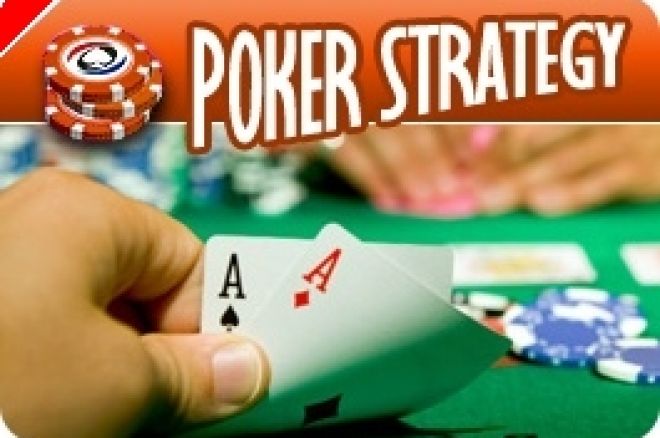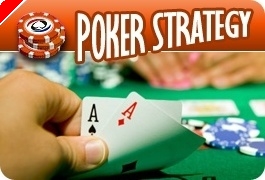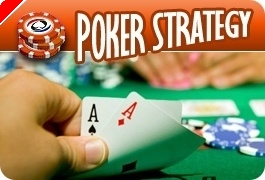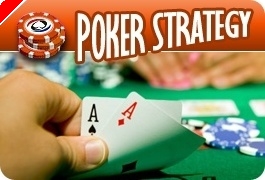H.O.R.S.E. Poker Strategy: In the Mix -- Freerolling the High (Stud Hi/Lo)

Stud games are typically the games that beginning mixed-games players struggle with the most. They require much more attention to detail than flop games due to all of the cards that are exposed during the course of a hand. For example, knowing that four diamonds are already dead is critical when determining whether or not the pot is laying the right price to continue chasing a diamond flush. Reading your opponent's hand requires a bit more skill than in flop games as well, especially in stud hi/lo where players may be chasing one side of the pot or the other.
Another concept that beginning players often fail to understand is that, in a split-pot game like stud hi/lo, the best hands are those that have ways to win both halves of the pot. If four players pay five bets each to go to the river, scooping the pot is worth a profit of fifteen big bets; getting half of the pot is worth a profit of only five big bets. That's a huge difference, and it only becomes more pronounced as fewer people are involved in the pot, to the point where if the pot is heads-up and it's a chop, neither player profits. This is why it often doesn't make sense to chase a naked low in a heads-up pot without some sort of draw to the high half of the pot. If the low draw doesn't come in, you will have lost all of the bets paid to chase it, and if it does come in you simply get your money back.
There's a very important corollary to this concept. Because of the requirement that a hand will only qualify for the low half of the pot if it is eight-low or better, the situation often arises in stud hi/lo where a player with a made low hand while have his opponent board-locked from either making a low of his own (if there's no possible way that opponent could have five cards ranked eight or lower) or making a better low than the one the player has already made. In those situations, the player with the made low is freerolling the high half of the pot. He knows he already has the low half of the pot locked up. If he catches the right cards he will get the high half also.
Players with a made high hand, but no shot at a low, will often continue to bet and/or raise their high hand without understanding that the player with the low hand is taking free shots to outdraw them, even after it is apparent that their opponent has a made low. Those situations are a bonanza for the player with the low, who should continue pounding the pot with bets and raises. At the worst that player will just get his money back; but he could also make a winner for the high half of the pot and squeeeze all of those extra bets out of the player who doesn't have a low.
An example from a recent H.O.R.S.E. session I played should help illustrate this point. I was dealt 4? 7? in the hole with the A? as my door card. This is a solid two-way starting hand, with the ability to make a low, a flush, a backdoor straight and of course a pair of aces or better. I definitely wanted to see the next street with this hand. Looking at my opponent's door cards, I could see one dead ace, and four dead cards to my low �� two deuces, a trey and an eight. Those cards being out seriously undermined my chance of making a solid low, but at least there were no other diamonds out. A player showing the 3? limped into the pot before I completed the bring-in. The bring-in called with the 2? and the other player called as well.
On fourth street we all caught low cards: I caught the 6? against the A? for the bring-in and the 6? for the preflop limper. I was concerned that I might not have the best low draw but decided to continue representing my ace with a bet. Both players called.
On fifth street I made a seven-low by catching the 2?, a pretty unlikely catch given that two of the deuces were already dead. Even better, both of my opponents caught seeming bricks �� the Q? for the bring-in and the 3? to pair threes for the preflop limper. After the player with the pair of threes checked, I fired again, folding the bring-in, but the player with threes check-raised me! Based on the action, I narrowed his range to either two small pair, or a pair of threes and a low draw. Against the former, I was a virtual lock for half of the pot, but my opponent had outs against me if he held the latter. Without further information, calling and seeing the next street seemed best.
On sixth street I caught my gin card �� the 5? �� against the 8? for my opponent. My hand had improved to (4? 7?) A? 6? 2? 5?, giving me a 6-5 for low, a flush draw and an open-ended straight draw, although two of the eights for the straight draw were already exposed. I had numerous outs to beat any high hand my opponent might currently hold (with the exception of a full house) and my 6-5-4-2-A for low was a virtual lock against any low hand my opponent might have or be drawing to. In essence, I had half of the pot already won and could take a free shot against my opponent to outdraw him on the river. I therefore raised after he led out. He made the call.
The river was kind to me �� it was the 8?, making my flush. My opponent checked to me and then called when I bet. I was best for both halves of the pot. My flush beat his small two pair, sevens and threes, that he had made on fifth street, and my 6-5 for low beat the 8-7 low he had backed into with runnning cards on sixth street and seventh street. I scooped the whole pot.
The hand that my opponent tabled �� (7? 7?) 3? 6? 3? 8? (5?) �� had almost no chance of outdrawing me for the low half of the pot after fifth street and absolutely no chance of doing so after sixth street. Even though I hadn't made a high hand on sixth street, raising there was absolutely the correct play. It gave me the opportunity to make an extra bet. When you're freerolling for one side of the pot or the other, getting all of those extra bets in the middle can be the difference between a winning session and a losing session.








